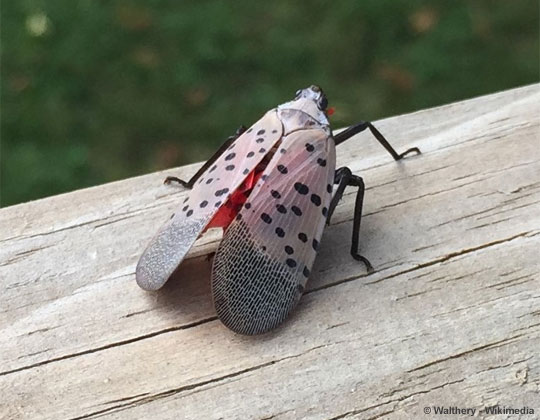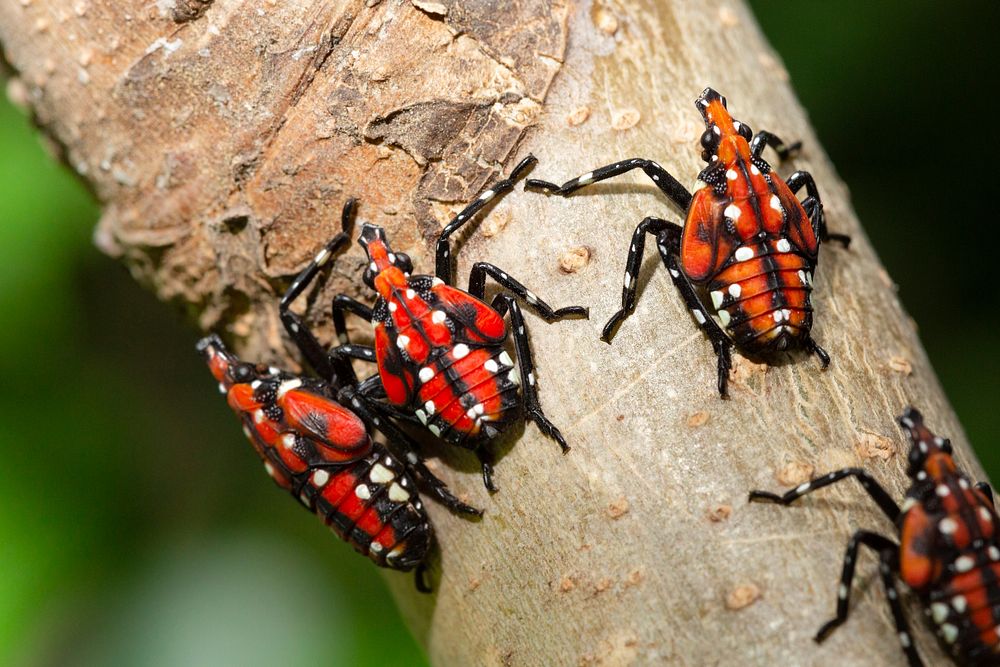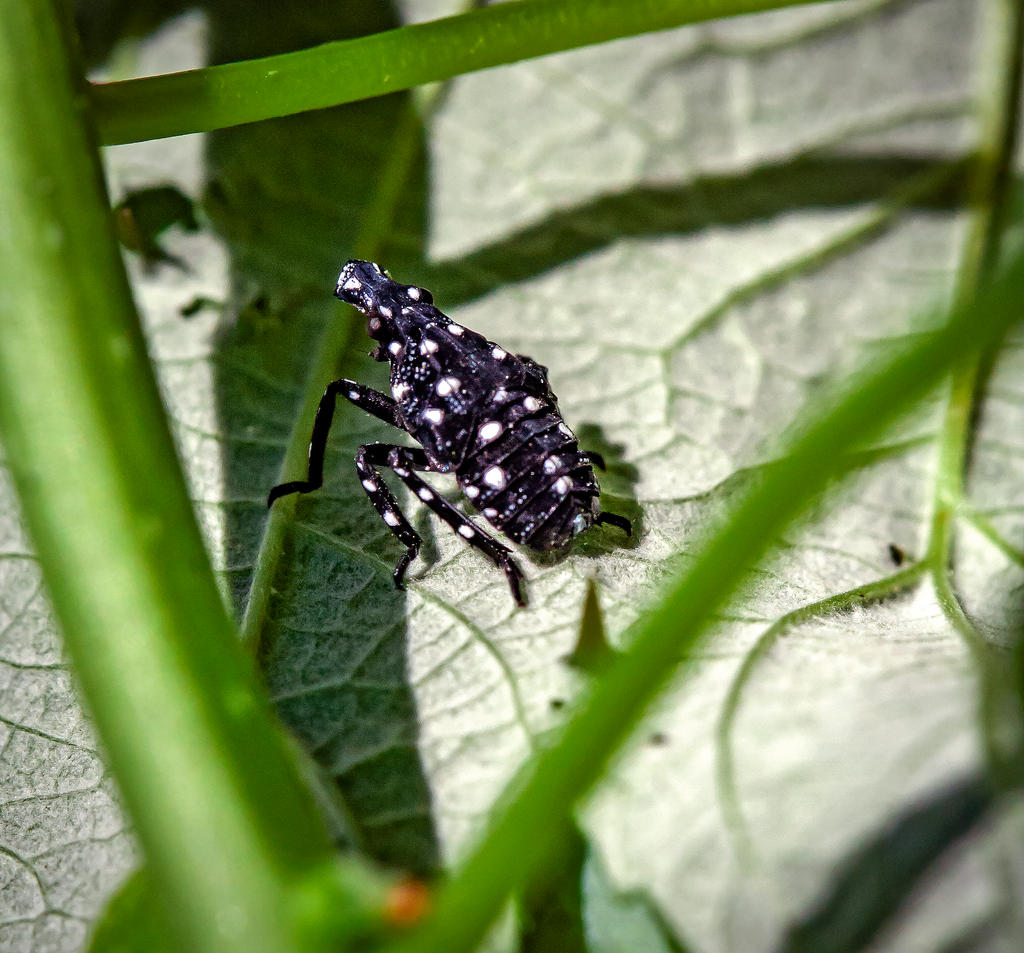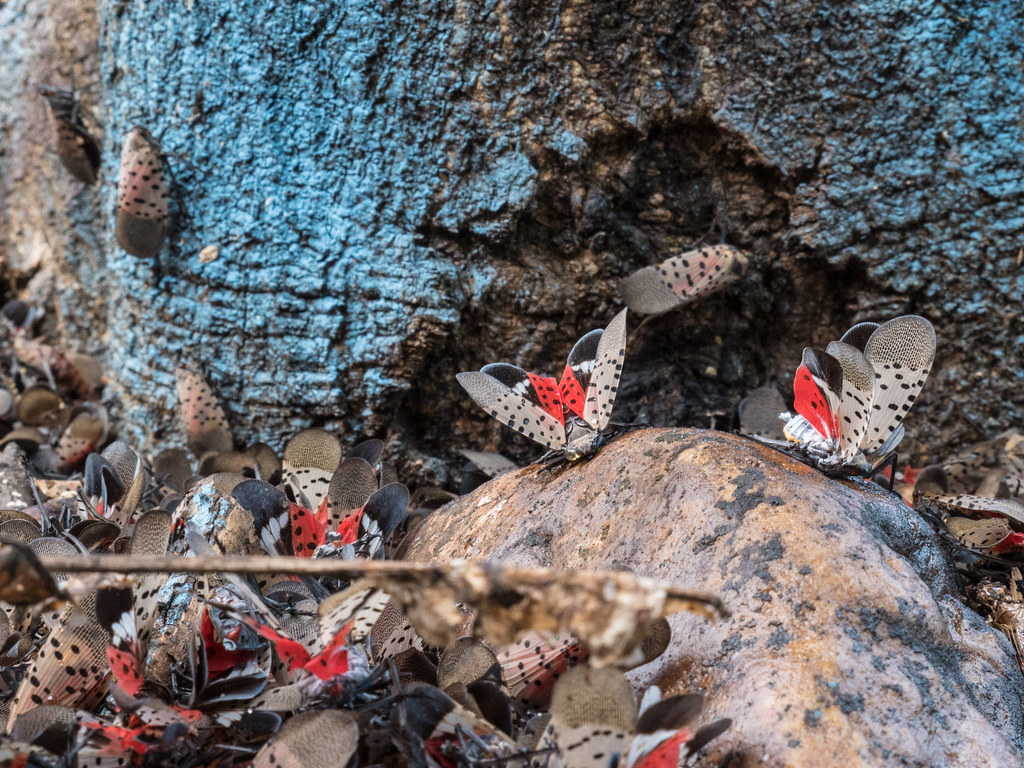Spotted Lanternflies Have Arrived in Amherst

Adult spotted lanternfly. Photo: Wikimedia Commons (CC BY-SA 4.0)
The following article was prepared with the assistance of Perplexity AI
The sudden appearance of the spotted lanternfly, a striking but destructive insect native to Asia, has been confirmed in Western Massachusetts this summer, raising new alarms among scientists, farmers, and residents alike. First detected in Massachusetts in 2021 in Fitchburg, the pest has now spread into Hampshire and Hampden Counties and into the Berkshire region, marking the westward progression of a species known for its ability to wreak havoc on local ecosystems and economies. Local sitings include Amherst, Belchertown, Holyoke, South Hadley, Springfield, West Springfield, Agawam and Wilbraham.
The spotted lanternfly (Lycorma delicatula) is not a “fly” but a planthopper, instantly recognizable by its gray wings marked by black spots and its vibrant red underwings. Adult insects are about 1 inch long and half an inch wide. Nymphs, which hatch in spring, start as black with white dots and gradually become bright red before maturing into adults by mid-summer. Both adults and nymphs gather in large numbers on trees, vines, and even backyard furniture.
While spotted lanternflies are visually captivating, their impact can be devastating. These sap-sucking insects target a wide range of hosts—nearly 100 plant species—including grapevines, apples, peaches, hops, and maples. Their feeding strips nutrients from plants, leading to oozing sap, wilting, leaf curling, and potentially dieback. Even more insidious is the sticky waste known as “honeydew” that lanternflies excrete. This sugary substance coats leaves and surfaces, fostering the growth of black sooty mold. While harmless to humans, this mold blocks sunlight, impairs photosynthesis, and weakens affected plants and trees.
The ecological risks to Western Massachusetts are serious. Infestations have already caused significant economic damage in states like Pennsylvania, where a 2019 study projected the pest could cost up to $324 million annually in agriculture losses if uncontrolled. Orchards, vineyards, and native hardwood forests in the region are particularly at risk. The lanternfly also lacks natural predators here, enabling its rapid spread and making eradication especially difficult.
Local agricultural officials urge residents to be vigilant. The Massachusetts Department of Agricultural Resources and UMass Amherst Center for Agriculture Food and the Environment recommend residents familiarize themselves with all life stages of the lanternfly—egg masses, nymphs, and adults. Egg masses look like gray, mud-like patches and are typically laid on tree bark, rocks, vehicles, and even outdoor furniture. Residents who spot any stage of the insect are strongly encouraged to photograph it, collect a specimen if possible, and report findings immediately using the Massachusetts Introduced Pests Outreach Project or local extension services.
If you encounter a lanternfly, experts recommend killing it—crushing is effective—and scraping off and destroying any egg masses you find. Do not try to move infested plant material, firewood, or outdoor equipment to new locations, as this is the primary way the pest spreads to new areas. For now, preemptive pesticide treatment is not recommended outside confirmed infestation zones, but residents in affected areas should monitor their gardens and trees closely and heed all guidance from state officials. Free identification cards and further educational material can be ordered from the state to help with detection.
The arrival of the spotted lanternfly in Western Mass is a call to action. Early detection and rapid response are critical to protect the region’s forests, orchards, and way of life from this invasive menace.
Read more:
Letter: Larkin Pazanova: Spotted lanternfly in Amherst (Amherst Bulletin)
Spotted Lanternfly Information Sheet (UMass Center for Agriculture, Food, and the Environment)
Update on Spotted Lanternfly Management (Massachusetts Department of Agricultural Resources Management)



